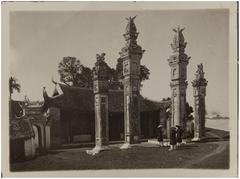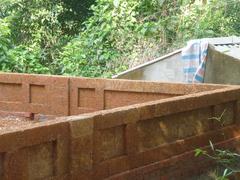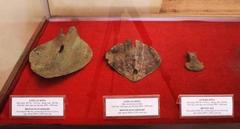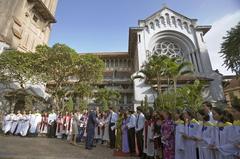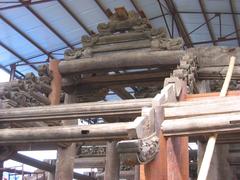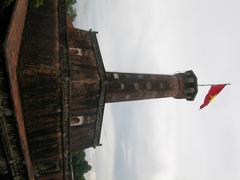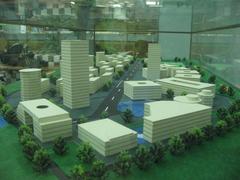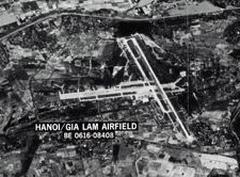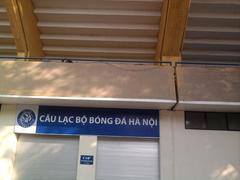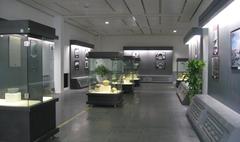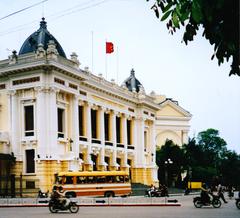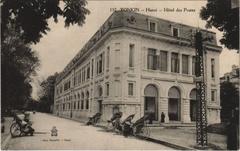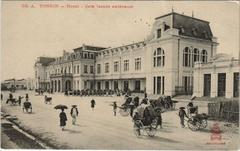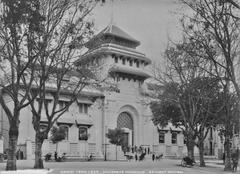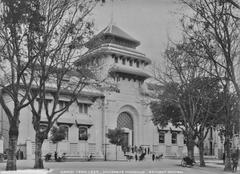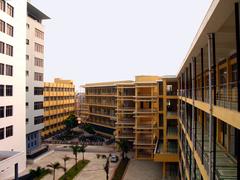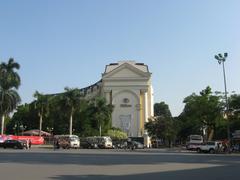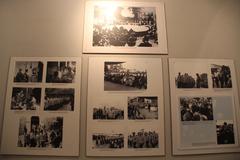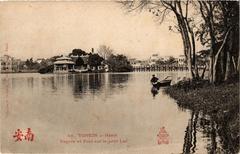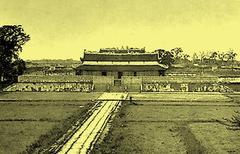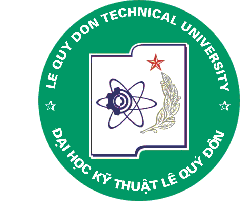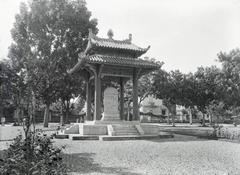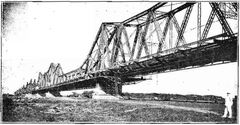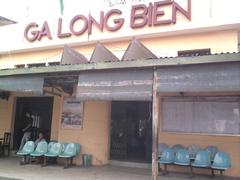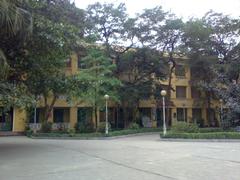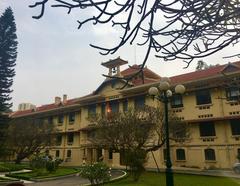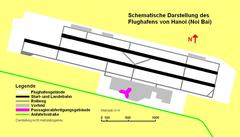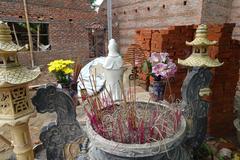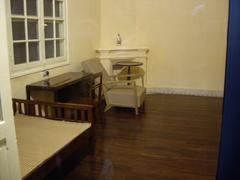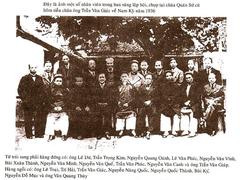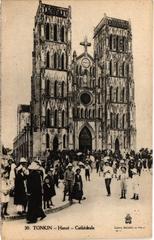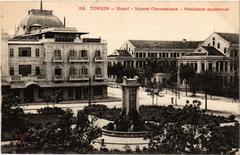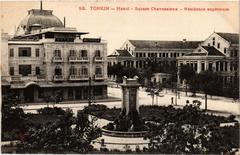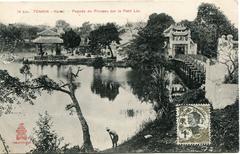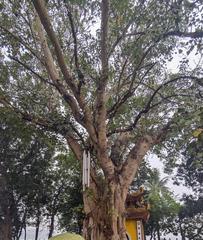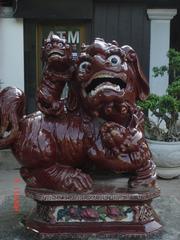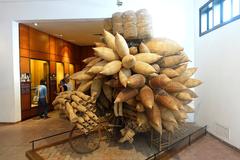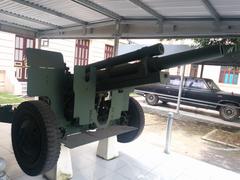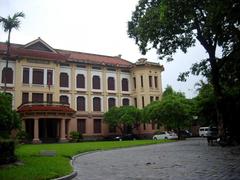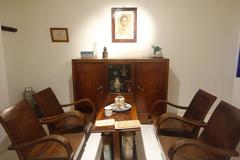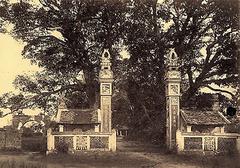Vietnam Academy of Science and Technology (VAST) Hanoi: Visiting Hours, Tickets, and Complete Guide
Date: 14/06/2025
Introduction
Located in Hanoi’s dynamic Cau Giay District, the Vietnam Academy of Science and Technology (VAST) is Vietnam’s premier multidisciplinary research institution. Since its founding in 1975, VAST has been at the core of Vietnam’s drive for scientific excellence and innovation, housing over 30 specialized institutes and affiliated universities. While VAST primarily serves as a research and educational hub, it also welcomes visitors during guided tours, conferences, and special open days. This comprehensive guide provides in-depth information on VAST’s history, achievements, visiting hours, ticket policies, accessibility, and nearby attractions to help you plan an enriching visit to Vietnam’s leading scientific center. For the latest updates, events, and virtual resources, consult the official VAST website.
Explore VAST to experience the intersection of Vietnam’s scientific progress, culture, and innovation. (Vietnam Academy of Science and Technology (VAST): History, Visiting Information, and Research Highlights; VAST Annual Report, 2016; Vietnam Academy of Science and Technology Activities)
Table of Contents
- Introduction
- VAST History and Institutional Overview
- Key Achievements and Milestones
- Visitor Information: Hours, Tickets, Access
- VAST Monument: Significance and Visiting Guide
- Campus Facilities and Tour Options
- Practical Visitor Tips
- Nearby Hanoi Attractions
- Frequently Asked Questions (FAQs)
- Visuals and Media Suggestions
- References
VAST History and Institutional Overview
Founding and Evolution
Founded on May 20, 1975, by decree of the Council of the Vietnam Government, VAST—originally the Vietnam Academy of Science—symbolized the nation’s post-war ambition to advance scientific and technological capacity. In 2008, its name changed to reflect a broadened scope and international standing. VAST now operates an extensive network headquartered in Hanoi, with additional facilities in Ho Chi Minh City, Hải Phòng, Nha Trang, Đà Lạt, and Huế. (Wikipedia; Fundit.fr)
Mission and Vision
VAST’s core mission is to lead Vietnam’s scientific research and technological advancement by:
- Conducting foundational research in natural sciences and technology
- Supporting Vietnam’s socio-economic development through innovation
- Training high-level scientists and technical experts
- Building international cooperation in science and technology
Its vision is to integrate Vietnam into the global scientific community and foster sustainable national development. (VAST Annual Report, 2016)
Structure and Research Scope
VAST is directly overseen by the Vietnamese government and comprises over 30 specialized institutes, including:
- Institute of Mathematics
- Institute of Physics
- Institute of Chemistry
- Institute of Biotechnology
- Institute of Ecology and Biological Resources
- Institute of Information Technology
- Institute of Marine Biochemistry
- Institute of Materials Science
- Institute of Environmental Technology
- Vietnam National Space Center (VNSC)
Affiliated universities include the Graduate University of Science and Technology (GUST) and the University of Science and Technology of Hanoi (USTH, or Vietnam France University), offering programs up to the doctoral level. (VAST Annual Report, 2016)
Key Achievements and Milestones
Scientific Research and Innovation
VAST is at the forefront of scientific progress in Vietnam. Notable achievements include:
- Launch of VNREDSat-1, Vietnam’s first remote sensing satellite, enhancing environmental monitoring and disaster management
- Publication of the peer-reviewed journal Advances in Natural Sciences: Nanoscience and Nanotechnology (ANSN), boosting Vietnam’s international research profile
- Joint marine expeditions with global partners to advance knowledge of Vietnam’s maritime biodiversity (Vietnam Academy of Science and Technology Activities)
National Impact
VAST’s research informs national policy and addresses key challenges in:
- Environmental protection and pollution control, especially in Hanoi
- Energy management and the digital transformation underpinning the Fourth Industrial Revolution
- Governmental strategies on innovation and science policy
International Collaboration
The Academy maintains robust partnerships for joint research, technology transfer, and scientist training, hosting regular international conferences and collaborative projects. (Vietnam Academy of Science and Technology Activities)
Visitor Information: Hours, Tickets, and Access
Location and Accessibility
VAST is located at 18 Hoang Quoc Viet Street, Nghia Do Ward, Cau Giay District, Hanoi (Academy brochure EN, p.13). The campus is easily reached by bus, taxi, or ride-hailing services and is well signposted. Parking is available but can be limited during major events.
Visiting Hours
- Monday to Friday: 8:00 AM – 5:00 PM
- Closed on weekends and public holidays
- Visits outside these hours are typically not permitted unless arranged in advance
Ticketing and Entry
- General Admission: No entrance fee for exhibitions or monument area
- Special Events/Conferences: May require advance registration or tickets
- Guided Tours: Must be pre-arranged, particularly for educational groups or international delegations
Accessibility
Most facilities are wheelchair accessible. Visitors with special needs are encouraged to contact VAST in advance to ensure suitable accommodations.
VAST Monument: Significance and Visiting Guide
The VAST Monument, located on the main campus, honors Vietnam’s commitment to science and technology. It symbolizes both national pride and the Academy’s pioneering role since 1975.
Location: 18 Hoang Quoc Viet, Cau Giay District, Hanoi
Opening Hours: Monday to Friday, 8:00 AM – 5:00 PM
Ticketing: Admission to the monument area is free; guided tours or special events require advance booking
Nearby Attractions: Vietnam Museum of Nature (on campus), Vietnam National University, Hoan Kiem Lake, Temple of Literature
Visitor Tips:
- Wear comfortable shoes for walking
- Guided tours enhance understanding of the monument’s symbolism and VAST’s impact
- Photography is allowed; drone use requires special permission
Events:
Public science festivals, exhibitions, and lectures are occasionally held at the monument site. Check the official VAST website for event schedules.
Campus Facilities and Tour Options
Main Facilities
- A16 Building: Publishing House for Science and Technology, editorial office for the Vietnam Journal of Science and Technology (VJST)
- A30 Building: Institute of Science and Technology for Energy and Environment (Academy brochure EN, p.13)
- Research Laboratories: Focus on materials science, environmental tech, electronics, renewable energy
- Conference Halls: Host international conferences and seminars
- Library and Resource Centers: Access to journals, books, and digital resources
Tour and Access Policies
- Conferences/Public Lectures: Open to registered participants
- Guided Tours: Available for educational groups, delegations, and special visitors; pre-arrangement required
- Open Days: Announced periodically for broader public access
Contact for Visits:
- Institute of Science and Technology for Energy and Environment: [email protected] | +84 24 37569136
- Vietnam Journal of Science and Technology: [email protected] | +84 24 39422825
Practical Visitor Tips
- Best Time to Visit: September–June (academic calendar); avoid midday heat in summer (Asia Highlights)
- What to Bring: Photo ID, business cards, notebook/tablet, weather-appropriate clothing, umbrella
- Dress Code: Business casual for general visits; business formal for conferences
- Food: On-campus cafeterias and nearby eateries serve Vietnamese and international cuisine
- Security: Standard precautions apply; campus is secure with controlled access
Nearby Hanoi Attractions
- Vietnam Museum of Ethnology: Explore Vietnam’s rich ethnic diversity (Hanoi Guides)
- Temple of Literature: Vietnam’s first university and a symbol of scholarly tradition
- Hanoi Old Quarter: Experience traditional markets and street food
- Hoan Kiem Lake: Iconic Hanoi landmark, perfect for walking tours
Frequently Asked Questions (FAQs)
Q: What are VAST’s visiting hours?
A: Monday to Friday, 8:00 AM – 5:00 PM; access is often limited to pre-arranged events or tours.
Q: Is there an entrance fee?
A: No general admission fee; some special events may require registration.
Q: Are guided tours available?
A: Yes, primarily for educational groups and delegations; public tours may be arranged during open days.
Q: Is the campus accessible for disabled visitors?
A: Most facilities are wheelchair accessible; notify VAST in advance for specific needs.
Q: How can I attend an event or arrange a visit?
A: Contact VAST via email or phone relevant to the department or event.
Visuals and Media Suggestions
- [Insert high-quality images of VAST headquarters, laboratories, and monument with alt text]
- [Embed interactive campus map and virtual tour links if available]
Summary and Final Tips
The Vietnam Academy of Science and Technology (VAST) is central to Vietnam’s scientific advancement, offering visitors a rare opportunity to engage with leading research, innovation, and culture. Although public access is limited, attending conferences, guided tours, or open days can provide valuable insight into Vietnam’s research ecosystem. Proximity to Hanoi’s cultural landmarks further enriches your experience.
Plan ahead, consult the VAST official site, and use resources like the Audiala app for updates on visiting hours, events, and travel tips.
References
- Vietnam Academy of Science and Technology (VAST): History, Visiting Information, and Research Highlights
- VAST Annual Report, 2016
- Vietnam Academy of Science and Technology Activities
- Vietnam Academy of Science and Technology (VAST) Monument in Hanoi: Visiting Hours, Tickets, and Travel Guide
- Academy brochure EN


